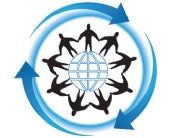How Openness Is Changing the World


There was once a time when companies didn’t much care about what consumers had to say. They made the products they thought consumers would buy, focused on making the sale, and congratulated themselves when the revenues came in.
Sure, some might have conducted the occasional focus group or offered comment cards for feedback, but such data was typically viewed and used in a very limited way, if at all. Rare indeed was the notion of forming any kind of ongoing relationship with the consumer; rarer still was the idea that consumers might have any kind of role to play beyond that of nameless buyer.

Much the same attitude has often prevailed in governments, where even the voting masses have primarily played the role of “buyer” — of political messages and of services, in this case — but not been involved much beyond that.
It was a largely closed world, in other words, where what I’ll call “makers” — whether of products or of messages and services — and “users” of those products and services existed in fairly separate spheres.
Part of that separation was ideological, of course, and based on the fact that it was how things had always been. Then, too, there was the logistical difficulty–or even impossibility–of forging a closer relationship in those pre-Internet days.
Three Key Trends
Ever since the Internet arrived, however, that separation has been slowly but surely chipped away. Today, we live in a world in which new doors are opening every day and ordinary people are being involved in everything from product design and refinement to running the very governments that rule the land.
We’re living in an era of unprecedented openness, in other words, and it’s changing the world around us. A few current trends illustrate it nicely; businesses and leaders that ignore it do so at their peril.
1. Transparency and Accountability
It would be difficult to imagine a better illustration of the new transparency the Internet has enabled than Wikileaks, which has focused a brighter-than-ever spotlight on government secrets and corruption that had previously been protected by the darkness of the pre-Internet era.
On the corporate side, not just Wikileaks but also the global economic crisis of recent years has uncovered similar secrets in some of the world’s largest corporations, causing widespread disgust among legions of consumers.
More than ever before, governments and corporations have been revealed for what they are — groups of humans, with all their associated weaknesses — thereby shattering the long-held illusion that they can always be trusted to do the right thing.

The result, not surprisingly, is that consumers and citizens are now demanding transparency and accountability in both. Governments are being called upon to provide more information about their inner workings, and to be accountable when failings are found.
Corporations, meanwhile, are now subject to what’s been called “transparency tyrrany,” whereby Internet-enabled consumers are laying bare everything from pricing to product quality for everyone to see. Online reviews are now the metaphorical whip consumers crack to keep companies open and in line.
2. Crowdsourcing
Just as the consumer crowds are demanding that companies and governments operate transparently and be held accountable for their mistakes, so too are they demanding to have more of a say in everything from product design to legislation.
In government, California Senator Joe Simitian’s annual “There Oughta Be A Law” contest is a nice illustration. Specifically, each year the senator invites Californians to submit ideas for a new law, or to take an existing law off the books. Since 2001, 16 such ideas have been signed into law.
In the corporate world, it’s difficult even to keep track of all the crowdsourcing efforts that have emerged in recent years. HarperCollins, for instance, has recruited the crowds for help identifying its next hit, while Peugeot holds an annual design contest. Other crowdsourcing efforts out there focus on brainstorming, product refinement, professional services and more.
Then, too, there’s RDTN’s recent effort in Japan to crowdsource a single database of radiation data. Not to mention, of course, Wikipedia.
Bottom line: No organization is an island anymore, to mutate the well-known expression. Consumers are no longer willing to rely solely on any firm or agency for much of anything. As a result, input from the crowds is increasingly a part of doing business.

3. Open Source Software
Last but not least in this overarching trend is open source software, which is being used more and more every day by companies and governments as well as individuals. The reason? Cost is one, of course, because such software is typically free. But it’s much more than that, and in fact companies typically don’t cite cost as their primary motivating factor.
Among the best reasons for organizational use of open source software is the fact that it’s open, and so can be modified to suit the needs of the organization. Also key is that its openness means it’s constantly scrutinized by a global base of developers and users, meaning that the code is being improved and made more secure every single day. No “Patch Tuesday” to wait for here–those fixes happen every day.
Open source is also more auditable–since there’s no proprietary “black box” protecting it–and it’s shaped by the very people who use it. There’s pretty much no way any one company could possibly make it better.
In short, the Internet has opened up the world, and consumers now expect to have a hand in virtually every process a company or organization undertakes. Is your business opening up accordingly?
Follow Katherine Noyes on Twitter: @Noyesk.






